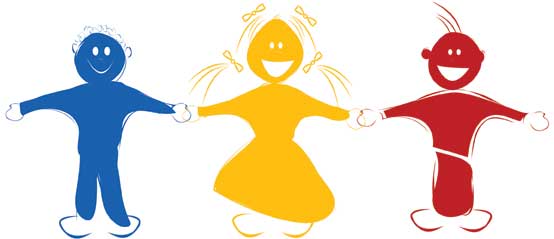Deepali Barapatre
In A Month of Mindfulness, we have, so far, discussed the need for mindfulness, different ways to practice it and how it helps us. But what exactly happens in our brains and bodies to bring these benefits of mindfulness in our lives? Until recently, we knew little about how the mind and body react to mindfulness, but with the increasing popularity of mindfulness’, many scientists became interested in brain imaging techniques to provide evidence that mindfulness can profoundly change our brains.
One study has shown that after eight weeks of mindful meditation, the brain’s ‘fight or flight’ response center – the amygdala – physically shrinks. The amygdala is the primal region of the brain, which is associated with fear and stress. Another discovery from the MRI scans was the thickening of the prefrontal cortex. The prefrontal cortex is the part of the brain where most of the higher-order functions happen like awareness, concentration, decision-making and planning.*
Mindfulness is also known to affect the default mode network of our brain.# This is a network of connections of a series of areas in our brain that is active during most of our waking time. This is the part of the brain that pops up thoughts like “Why did you say that stupid thing yesterday?” or “I wonder what my class tomorrow will be like?” It is the part of the brain that makes you think about the past, future, yourself, and others, in fact everything but the present. What mindfulness does is reduce the default mode network activity even outside the time you spent meditating.
With all these incredible benefits mindfulness provides us, let’s dive into part 3 of A Month of Mindfulness.
Breathing exercise for the week
Mindful breathing boards
Breathing boards provide a fun, visual and tactile way to focus and calm down using mindful breathing.
• On a breathing board of their choice, have children trace the shapes or lines on the board, breathing in and out all the while.
• Different varieties of breathing boards can be printed out or drawn using colours. (Images of breathing boards are given below for reference).

Sunday
Wiggle and freeze
It is time for your children and you to get silly!
Things needed: Silly music (and silly you)
• Put on some silly music that your children love.
• Ask them to wiggle, bounce around, or dance till you say ‘freeze.’
• Once everyone freezes, take a moment to notice how you feel in your body.
1. Do you feel some shaking?
2. Do you feel some tingling?
3. Is your heart beating too fast?
• Repeat it as many times as you want.
Pro-tip: You can rotate the responsibility of who will say ‘freeze’ to give some autonomy to your children as well.
Cultivating body awareness is an integral part of mindfulness practice and this is a playful way of doing just that.
Monday
Dragon breathing
Who doesn’t love dragons, right? They are majestic, can fly and breathe fire! Just like the dragon, you can breathe out fiery tension and negative emotions with this breathing technique. This is also a great activity to do before exams or during class breaks.
• Sit up straight.
• Breathe in through your nose.
• Stick your tongue out and breathe out with a roaring noise.
• Relax your jaw and open your mouth wide.
• When you are breathing out, make sure your exhalation is longer than your inhalation.
Pro-tip: If your children don’t find dragons as cool as you do, you can substitute a dragon with a lion or a tiger. You can also pair this activity with storytime on dragons.
Tuesday
Happy pictures
It is time to connect with technology mindfully. Being mindful also means being aware of what triggers your emotions – what makes you happy? Sad? Angry? Scared? This self-awareness is the first step in noting the emotion and letting it go.
Things needed: Camera (the camera on your phone will also do), a computer/laptop or projector to share the pictures.
• Set a time limit for this activity – half an hour or one day.
• Tell the students to go around the house, classroom, or their neighborhood.
• Click pictures of things that make them happy.
• You can set a limit to the number of pictures each child can take so that they don’t click a million pictures!
• Regroup. Ask them to share their pictures and why they chose these pictures.
Pro-tip: You can do the same activity for different emotions.
Wednesday
The chime game
This game is a baby step towards building the skill for mindful listening. Mindful listening is our ability to listen with intention and be fully present in the conversation. Even as adults, we are often guilty of being distracted while pretending to listen. If we want our children to have deep, meaningful relationships, it is imperative to teach them to listen mindfully.
Things needed: Chime, bell, any musical instrument, or a chime sound from the Internet. The chime game introduces children to paying attention to the act of mindful listening.
• You can do this with eyes open or closed.
• Ring the bell and ask the children to raise their hands when they stop hearing the sound.
• Variation:
1. Ring the bell hard and ask the children to count the number of times they breathe out before they no longer hear the sound of the bell.
2. Ring the bell a few times at intervals in a minute. Ask the students to close their eyes and count the number of times you ring the bell in a minute.
3. Ring the bell a few times at intervals in a minute. Ask the students to count the periods of silence with their eyes closed.

Guiding questions
• Do all of you hear the end of the sound at the same time?
• Why do you think that happened?
• Did you feel you could hear better with eyes open or eyes closed?
• Where do you think the sound goes when you no longer hear it?
• Do you need a bell or chime to listen attentively in your life?
• What other situations do you think you can use mindful listening in?
Thursday
Superhero self-portraits
Last week, we made pictures of ourselves. This week, let us draw the superhero in each one of us! Before you begin, talk to your children about the superhero in them. Tell them that each of us is unique and has immense power to be good. We need the superhero in us to remind us of the best version of ourselves, dream big, get over our fears, or inspire others! Even if this is for kids, adults will find this activity exhilarating too!
Things needed: Paper and art supplies.
• Think about your superpowers and how you want to show them. Do you have a kindness crystal? or an empathy magic wand?
• Think about your costume.
1. What colours do you want?
2. Will it have a cape?
• Now draw yourself; it can be as realistic or as fantastical as you want.
• Once you have drawn yourself, show your superpowers through accessories, symbols or words.
• Some superhero powers to consider
1. Make others laugh.
2. Help parents at home even when not asked.
3. Can talk to animals.
4. Help people feel better when they are sad.
5. Can fly.
• Once you are done, give yourself a cool superhero name!
Friday
Balancing relay
This is a mindful twist to your good old lemon and spoon or egg and spoon game. This game encourages children to focus, be present, and have a greater awareness of their bodies.
Things needed: Spoon and water for each team.
• Split into two teams.
• Give each one of them a spoon with water in it.
• The challenge is to carry their spoon to the next person without spilling any water.
• You can substitute water with lemon, egg or potato.
• To make it more difficult, ask your children to walk backward or sideways.
Saturday
Pinwheel breathing

Things needed: Pinwheel or craft supplies to make a pinwheel.
• If you don’t have a pinwheel, they are very easy to make. Ask your children to make pinwheels using craft paper and a wooden straw.
• With the pin, sit up straight and relax your body.
• Keep the pinwheel in front of your nose and mouth, don’t breathe in any special way.
• Ask your children – How long did the pinwheel rotate?
• Now ask them to take a long breath in and a long slow breath out on the pinwheel.
• Ask them if they see anything different? Do they feel any different?
• Tell them that just like the pinwheel, we can go on for longer without feeling frustrated or tired if we calm ourselves from time to time.
• Talk to them about the importance of taking care of their mind and body to lead a healthy life.
If you know of any other mindfulness resources, let me know. Also, I would love to know how your children are liking these day-to-day mindfulness activities.
* https://journals.plos.org/plosone/article?id=10.1371/journal.pone.0064574
#https://www.pnas.org/content/108/50/20254
The author is a passionate educator who believes in nurturing good human beings before anything else. She is a freelance curriculum designer and educational consultant. She can be reached at deepaligb24@gmail.com.
